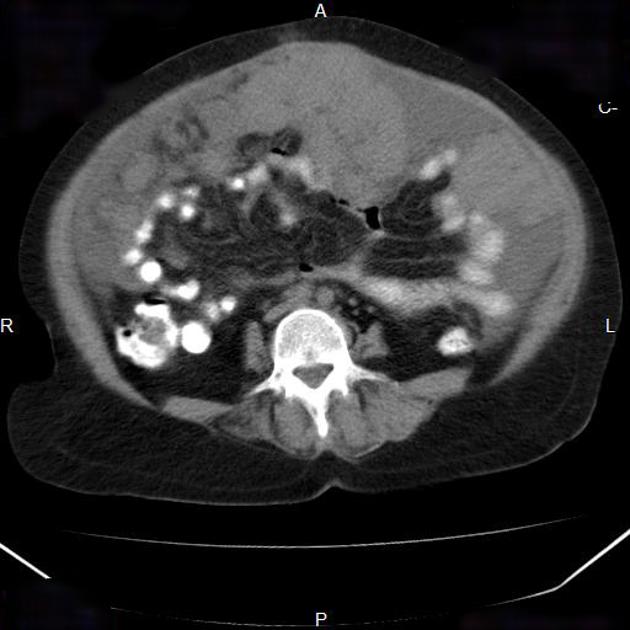CA-125 is a high-molecular-weight glycoprotein found on the surface of Müllerian and celomic epithelial-derived cell types and is the best-known tumor marker for epithelial ovarian cancer 6. Importantly, it may also be elevated in several other conditions (see differential diagnosis section below).
On this page:
Limitations as a tumor marker
Serum concentrations of CA-125 ≥35 U/mL are associated with ovarian epithelial malignancy. However, there are several limitations to using CA-125 as a biomarker 6:
-
low sensitivity during early disease (~50%) 6
levels significantly elevated in only ~50% of women diagnosed with stage I or II ovarian cancer 6,8
normal levels in 20% of ovarian malignancies
elevations in other benign and malignant processes
Clinical applications
Serum CA-125 level is useful in several aspects of the management of ovarian cancer:
-
it may help in the early detection of malignancy, as elevated levels may precede clinical detection by more than a year 6
there is no recommendation for the use of CA-125 for ovarian cancer screening in the general population 8
measurement may be useful in the evaluation of an indeterminate adnexal lesion (although still non-specific) 1
degree of elevation is useful for prognostication, as the risk of dying of disease is higher in patients with a higher serum level of the marker
-
trajectory of serum concentration may be used to assess treatment response and for detection of recurrence 6
negative CA-125 level and imaging cannot exclude recurrent disease, only detected by repeat laparotomy 1
History and etymology
CA-125 was indirectly discovered during experiments in designing monoclonal antibodies which selectively bound to cancer cells. In 1981, Bast et al. created an antibody (OC125) which specifically bound to the surface of ovarian cancer cells, by immunising mice with human serous papillary cystadenocarcinoma cancer cells. In the original experiments, it was noted that the antibody also reacted to a melanoma cell line 9.
Differential diagnosis
Serum CA-125 level may be elevated in a number of benign and malignant conditions 1-3,6,7, and may even be seen in some (~1%) normal healthy patients 1.
Malignancy
-
ovarian cancer: elevated in 80% 1
includes fallopian tube malignancy and primary peritoneal carcinoma, as these originate from similar cell types and are treated similarly 8
advanced or metastatic non-ovarian abdominal malignancies: elevated in up to 40% 1
Benign conditions
-
gynecological/obstetric
fibroids 3
uterine obstruction 3
first trimester pregnancy 1
-
non-gynecological
-
acute peritonitis
-
peritoneal infection (e.g. peritoneal tuberculosis)
particularly in younger women
-
normal patient (~1%) 1






 Unable to process the form. Check for errors and try again.
Unable to process the form. Check for errors and try again.